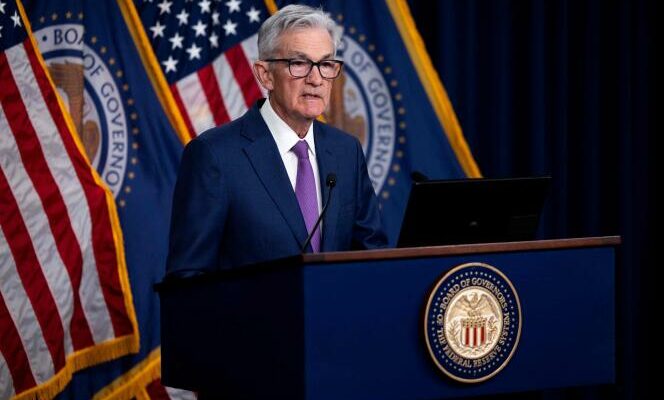We had to wait until the end of his press conference, Wednesday January 31, for the Chairman of the Federal Reserve (Fed), Jerome Powell, to drop his bombshell: “I don’t think it’s likely that the committee will reach the level of confidence [suffisant] by the March meeting [pour commencer à baisser les taux] but that remains to be seen.” Suddenly, Wall Street tanked, while interest rates tightened.
Operators who hoped that the American central bank would reduce its rates at the end of the next meeting of its monetary policy committee on March 20 will have to wait, probably until the next meeting, on March 1.er may. In its press release, the institution had already hinted that the drop would not happen immediately, but in a less explicit manner: “The Monetary Policy Committee does not believe it will be appropriate to reduce [les taux] until it has acquired greater confidence in the fact that inflation is moving sustainably towards 2%. »
At its December meeting, most Fed members predicted they would cut rates three times in 2024, after two years of credit tightening.
Mission almost accomplished
From March 2022 to the summer of 2023, the Fed suddenly raised its rates, from 0 to 5.25% to curb inflation, born from the bottlenecks created by the covid crisis, accentuated by the war in Ukraine and facilitated by an ultra-accommodating fiscal and monetary policy. The brutality of the monetary tightening aimed to avoid an inflation-wage spiral and high expectations of price increases.
Two years later, the mission is almost accomplished, with annual inflation falling to 2.9% in December 2023. This performance was achieved in an almost miraculous manner, with unemployment at its lowest at 3.7% and growth solid (2.5% in 2023).
But Mr. Powell wants to be sure that he does not ease the reins too soon, to avoid a resurgence of inflation as the United States experienced in the 1970s and 1980s.
Wall Street, which had opened lower due to results considered too weak from Microsoft and Google, ended the session with a decline of 1.61% in the S&P 500 index and 2.23% for the Nasdaq, which brings together major technology stocks. Ten-year rates remain low, at 3.95% compared to more than 5% in October 2023.
